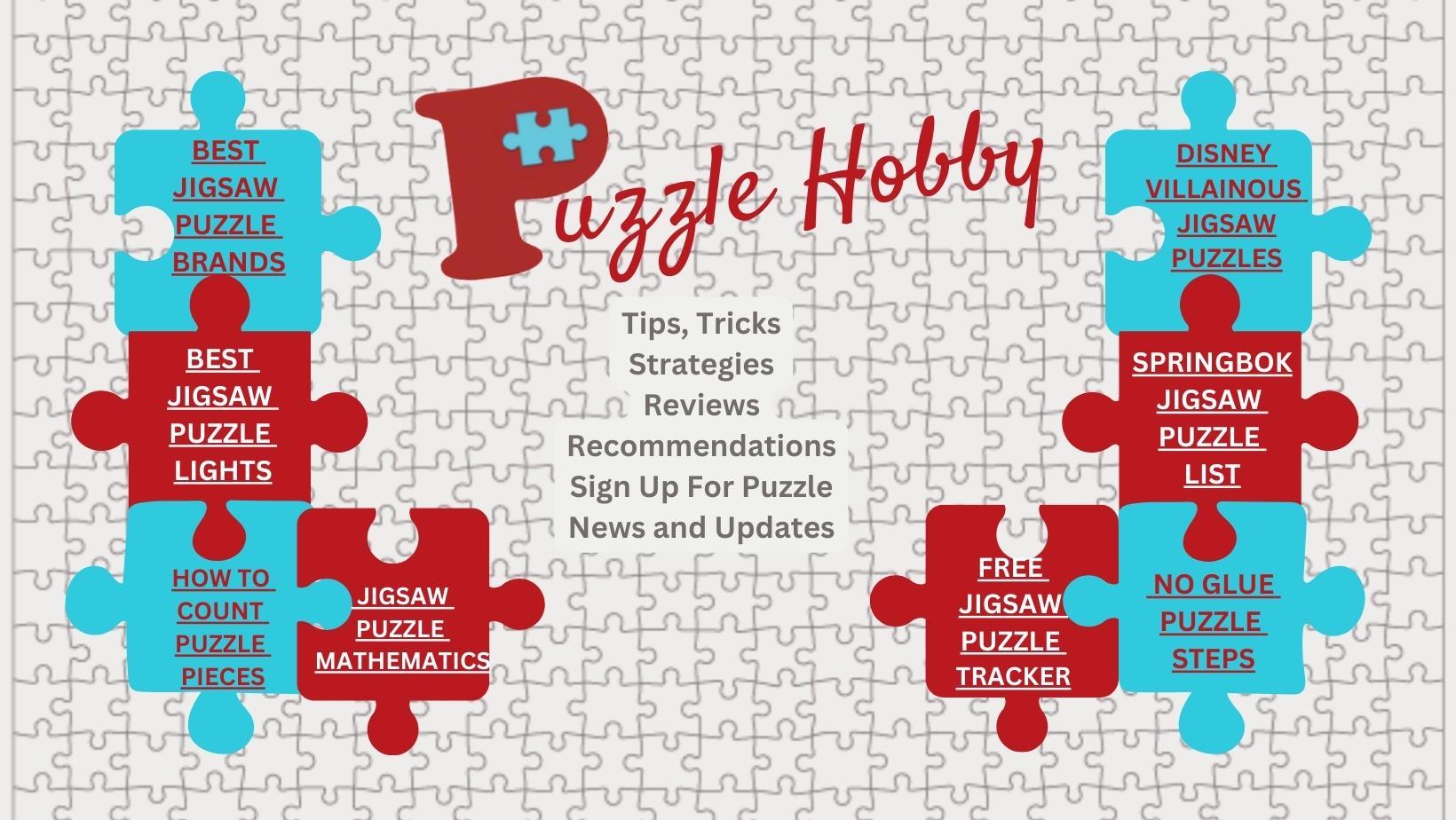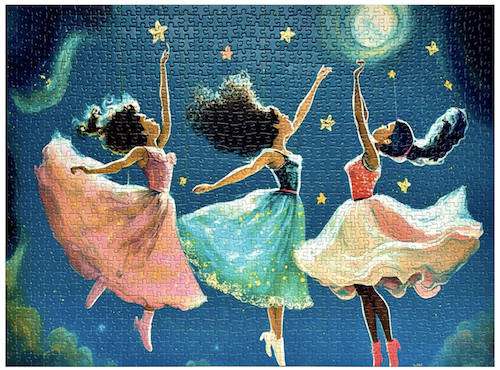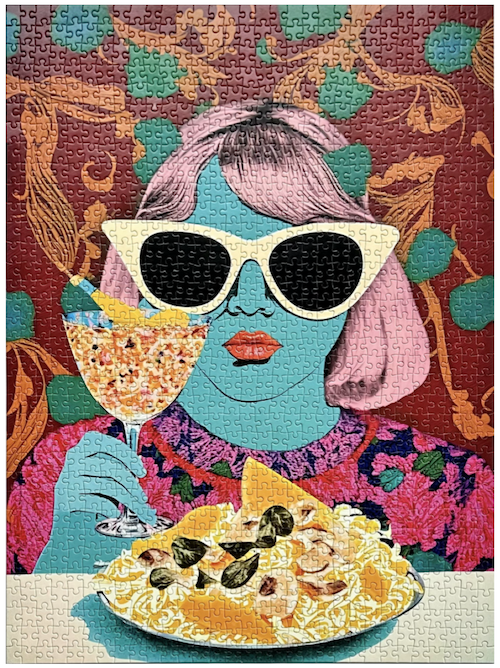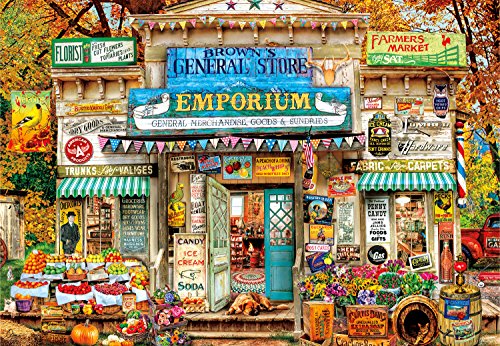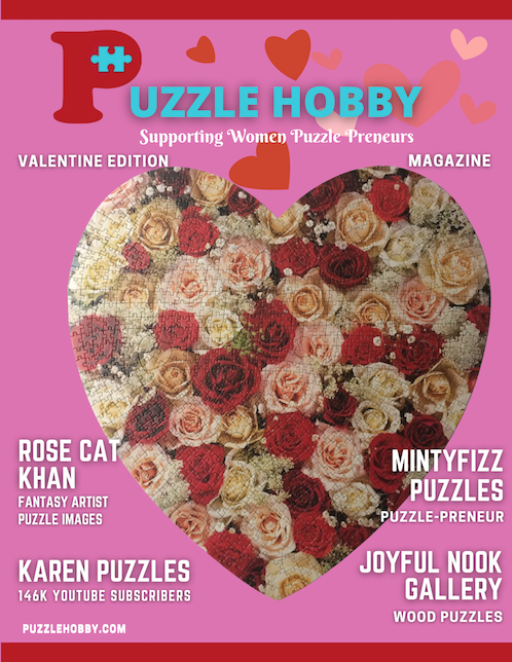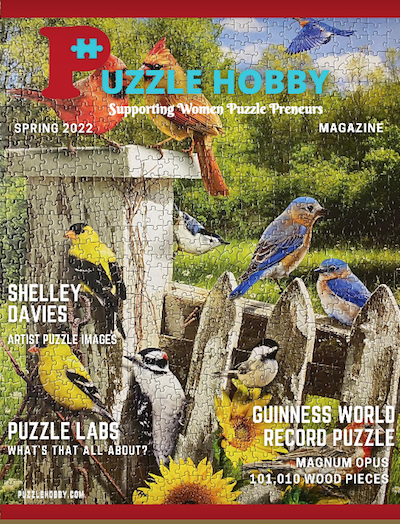 |
 |
- FAQ's 100 Questions
- Best Puzzle Brands
- Activities/Accessories
- Best Puzzle Lights
- Sponsored Reviews
- Sales l Giveaways
- Reap the Benefits
- Get Your Game On!
We are a participant in the Amazon Services LLC Associates Program, an affiliate advertising program designed to provide a means for us to earn fees by linking to Amazon.com and affiliated sites. Also, some of our posts contain other affiliate links and we will be compensated if you make a purchase after clicking on our links.


Reach the Stars Puzzle
by Guest Writer Roberta Shore
We invite you to read Roberta Shore's review on the following jigsaw puzzle. Since she has discovered the advantages of jigsaw puzzling, she has reviewed/journaled several that will be available on this website.
Reach for the Stars Puzzle - Roberta's Review
|
Cross & Glory |
My Confident Puzzler Difficulty Rating: Hard
Maybe not the first thought, but my guess is after “aww, that’s so sweet” came “this could be challenging!” At least that was my reaction, I took it on anyway. I could not resist this illustration!
From the page description: “ . . . a 1000 piece puzzle with exclusive artwork of young ballerinas reaching skyward. With a soft pastel color palette, this enchanting puzzle will captivate and inspire you. Piece together the delicate sections for a rewarding challenge and feel a sense of accomplishment with every step closer to completing the stunning image. Perfect for puzzle enthusiasts, dance lovers, or anyone seeking a moment of tranquility. . . . let the magic begin!”
Quality: It is clear this brand is proud of the puzzles it produces. This is the third one I have experienced (one alone and two with my daughter), and the quality continues to ring true. It was perfect in every way. The small, sturdy, 8” square box has the full graphic on both the top and bottom. Inside was a sealed bag of pieces, a promotional piece, and an 8” x 8” poster. There was no puzzle dust. Color match pieces to images was excellent. The solid pieces had an almost matte “satin” finish. There were no false fits. Piece fit was immaculate — the right piece literally fell into place. No pieces were damaged or together uncut, and none were missing. When complete, the piece fit was pick it up, turn it over tight!
Getting started: Find the edge pieces and sort by color. My adult daughter, a seasoned puzzler, was visiting, so much of this effort was shared. (I took up this hobby just about 2 years ago.) We did a very dedicated sort that included the dark background corners, the solid blue background, the background with little stars, the background that had string parts, the big star parts, the moon, and the skin tones. Except for the hair sort, we tried to do each ballerina’s arms and clothes separately - bodice, skirt, shoes. Some colors duplicated across the puzzle. Yikes!
Construction: We built the frame first. Our puzzling styles are different. My daughter likes to piece sections together and I like to build in from the frame. So she got to work on the skirts while I filled in the corners, the moon, the legs and shoes. We kept going. When my daughter had to fly 2500 miles home, there was more to do. The middle ballerina still needed a skirt, various other pieces needed a home, and tray after tray after tray of blue background needed to be filled in. Adding to the challenge was the fact there was only one piece shape — the 2 in / 2 out traditional shape. I don’t take points off for that, it is a common choice for other brands, but staring at variations in holes and knobs can get tedious.
There were at least 260 blue pieces with very few clues.
- Clue 1: I had a tray of the 10 completed large stars, and put them near where they would go.
- Clue 2: The strings started at the top, so I pieced that sort next. Yes, I was truly relishing each piece I put in place, but was I captivated, inspired and tranquil at every turn, maybe not.
- Clue 3: If a brand offers a puzzle picture with piece shapes, should the puzzler take advantage? In this one instance, I opted to use it. I compared the sort with the tiny stars to the fairly accurate image and pieced in that sort.
There were still a few tiny stars left over, but I was not feeling too guilty for the help. There were still around 140 blue pieces left with no hints other than tint color (best seen in daylight), and alternating horizontal / vertical placement. Yes, this puzzle was hard and challenging. And yes, it was fun, and oh so enjoyable sharing the experience with my daughter!
Final thoughts: No “magic” - patience, time, concentration and breaks were required to enjoy this puzzle’s slow progress. Seeing it finished was it’s own reward. It is so very charming. It will be a holiday gift to a puzzler friend. If that had not been the plan, I would have set it on a side table and worked on it in between other puzzles. As for Cross and Glory, do check them out. There are most definitely more curious and abstract puzzles in their collection, along with some unexpected, and beautiful ones among them. At left is the second one we did, “Strike a Pose”. Above all, it’s the quality and piece fit that make them so gratifying to put together.
My grades for Reach the Stars: Quality A+, Fun Factor A+
- Best Quality Jigsaw Puzzles
- 43 Best Jigsaw Puzzle Brands
- 5 Best Jigsaw Puzzle Lights
- 11 Best Jigsaw Puzzle Tables
- 23 Best Jigsaw Puzzle Mats
- 85 Best Shaped Jigsaw Puzzles
- 29 Disney Villainous Jigsaw Puzzles
- Best Jigsaw Puzzles Scoops
- Best Jigsaw Puzzle Glue
- No Glue Method for Puzzles
- 115 Cobble Hill Jigsaw Puzzles
- 33 JaCaRou Jigsaw Puzzles
- 9 WerkShoppe Jigsaw Puzzles
- 5 Grateful House Jigsaw Puzzles
- 95 Eurographics Jigsaw Puzzles
- 7 Hennessy Jigsaw Puzzles
- 11 Ceaco Jigsaw Puzzles
- 29 Cloudberries Jigsaw Puzzles
- 2 Wentworth Jigsaw Puzzles
- _______Advertisement_______
We have collected a massive list of jigsaw puzzles in numerous categories on our Amazon Store link. It's a quick way to browse most current puzzles and/or specific seasons, accessories and themes. Makes for a terrific one-stop jigsaw puzzle gift giving shopping centre. CLICK HERE
You may like these Jigsaw Puzzles
About: Mastering the Art of Choosing the Right Jigsaw Puzzle
Tips to Avoid Buying Overwhelmingly Difficult Images
Jigsaw puzzles offer a delightful challenge, but there are times when the level of difficulty can be overwhelming. Whether you're a seasoned puzzler or a novice looking for an enjoyable experience, it's important to choose the right puzzle image that matches your skill level and personal preferences. In this article, we'll explore the world of difficult jigsaw puzzles and provide you with a list of tips to help you avoid buying images that might leave you feeling frustrated.
1. Know Your Skill Level
Understanding your own puzzle-solving skills is key when selecting a jigsaw puzzle. Be honest with yourself about your experience and comfort level. If you're a beginner, it's best to start with puzzles that have a lower piece count and simpler imagery. As you gain confidence and experience, you can gradually challenge yourself with more complex puzzles.
2. Consider the Piece Count
The number of puzzle pieces directly affects the difficulty level. Larger piece counts, such as 1,000 pieces or more, can be more time-consuming and mentally demanding. If you prefer a less challenging experience, opt for puzzles with smaller piece counts, such as 500 pieces or even fewer.
3. Analyze the Imagery
Before purchasing a puzzle, carefully examine the image. Complex and intricate designs, such as landscapes with numerous details or abstract patterns, tend to be more challenging. If you're looking for a less daunting puzzle, choose images with clearly defined sections, distinct colors, or simpler motifs.
4. Read Product Descriptions and Reviews
Take the time to read product descriptions and reviews. Puzzle manufacturers often provide information about the level of difficulty, which can help you make an informed decision. Additionally, reading reviews from other puzzlers can give you insights into the puzzle's complexity and whether it aligns with your preferences.
5. Look for Beginner-Friendly Collections
Many puzzle companies offer collections specifically designed for beginners. These collections often feature puzzles with larger pieces, simpler imagery, or even hints and guidance to assist you along the way. Exploring these beginner-friendly options can be a great way to ease into the world of jigsaw puzzles.
6. Seek Variety in Piece Shapes
Some puzzles feature unique piece shapes that can add an extra layer of difficulty. If you're looking for a more accessible experience, consider puzzles with standard grid-shaped pieces. However, if you enjoy a challenge, look for puzzles with irregular or whimsical piece shapes, as they can make the assembly process more complex and engaging.
7. Check for Puzzle-Specific Features
Certain puzzle manufacturers offer features to indicate the level of difficulty. For example, some puzzles may have a "difficulty rating" on the packaging or specify whether they are suitable for beginners, intermediate puzzlers, or advanced enthusiasts. These indicators can be valuable in making an informed decision.
8. Consider Collaborations with Artists
Many jigsaw puzzle companies collaborate with renowned artists, resulting in a wide range of puzzle images with varying levels of difficulty. Some artists may have a distinctive style that makes their puzzles more challenging, while others may focus on creating accessible and enjoyable designs. Research the artist's work and style to ensure it aligns with your preferences and skill level.
9. Seek Recommendations from Fellow Puzzlers
Engaging with the puzzle community, whether through online forums, social media groups, or local puzzle clubs, can provide valuable insights and recommendations. Experienced puzzlers can share their thoughts on specific puzzle images and brands, helping you make informed choices.
10. Trust Your Instincts
Ultimately, trust your instincts and choose puzzles that genuinely spark joy and interest for you. While it's important to consider the difficulty level, it's equally crucial to select images that you find visually appealing and personally satisfying. Enjoying the process of assembling a puzzle is just as important as the challenge itself.
By following these tips, you'll be better equipped to choose jigsaw puzzles that match your skill level and provide an enjoyable experience. Remember, puzzles should be a source of relaxation and fun, so don't be afraid to explore different options and challenge yourself while staying within your comfort zone. Happy puzzling!
(ChatGPT, personal communication, June 20, 2023)
